Click here and press the right key for the next slide (or swipe left)
also ...
Press the left key to go backwards (or swipe right)
Press n to toggle whether notes are shown (or add '?notes' to the url before the #)
Press m or double tap to slide thumbnails (menu)
Press ? at any time to show the keyboard shortcuts
Categorical Perception in Infancy


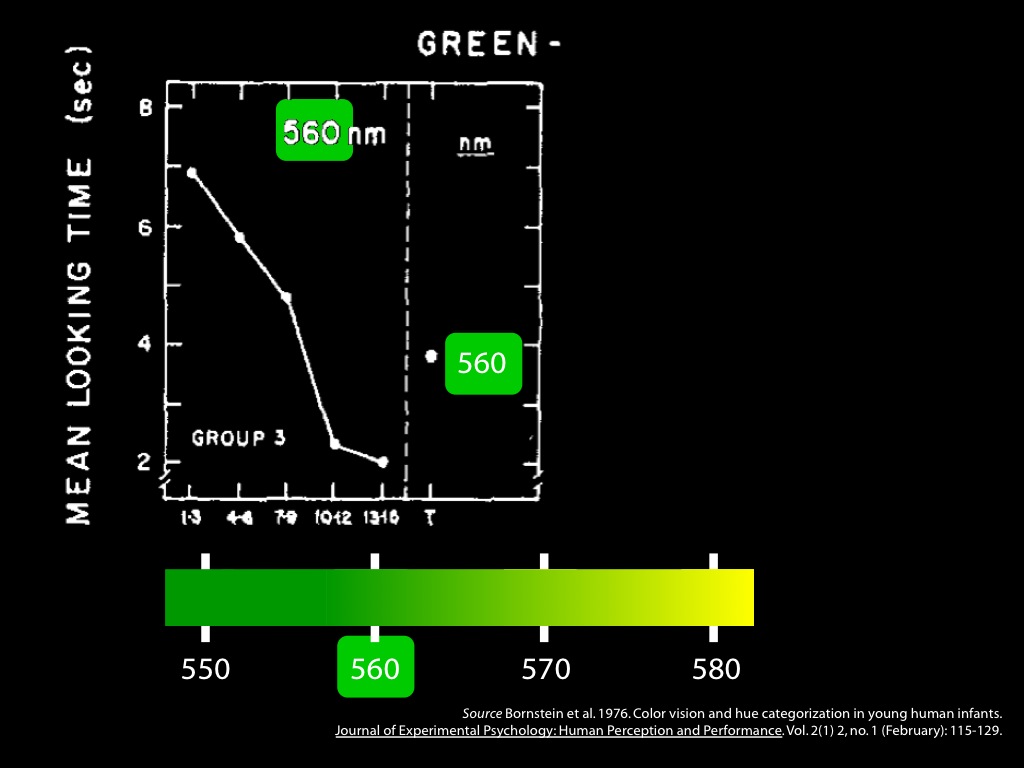
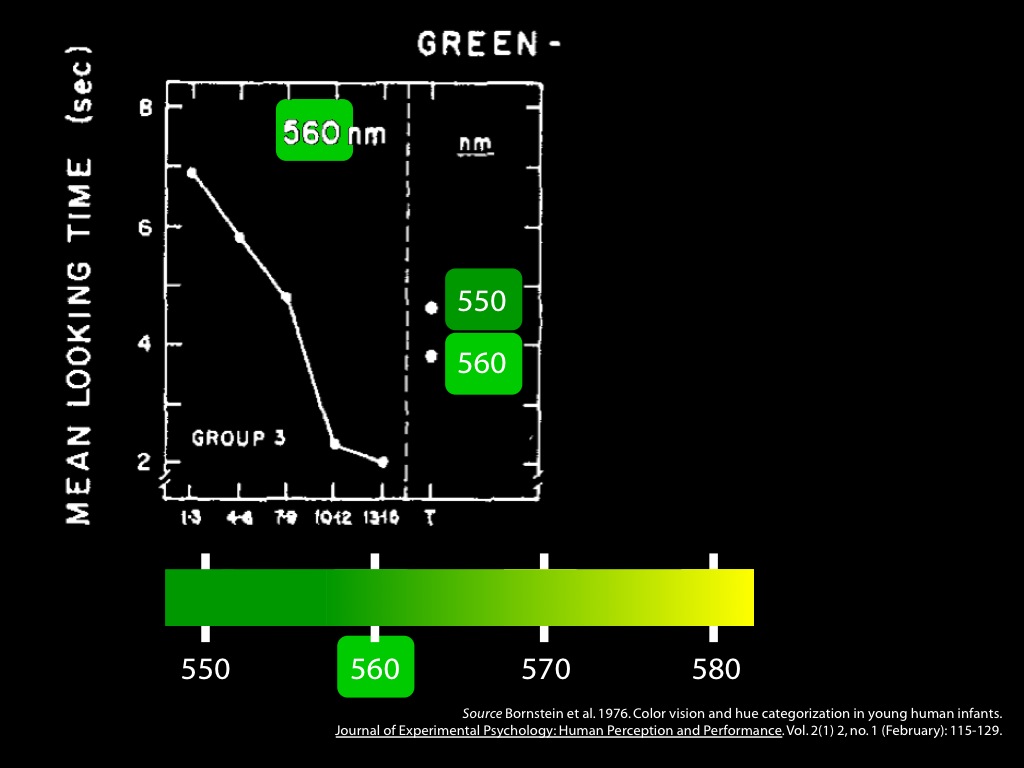

‘there was a familiarization phase with one hue repeatedly shown, and then a test phase where the familiar hue was paired with a novel hue across four trials. The time spent looking at the novel hue relative to the test hue during the test phase was calculated (novelty preference)’
Skelton et al, 2017 p. 5549
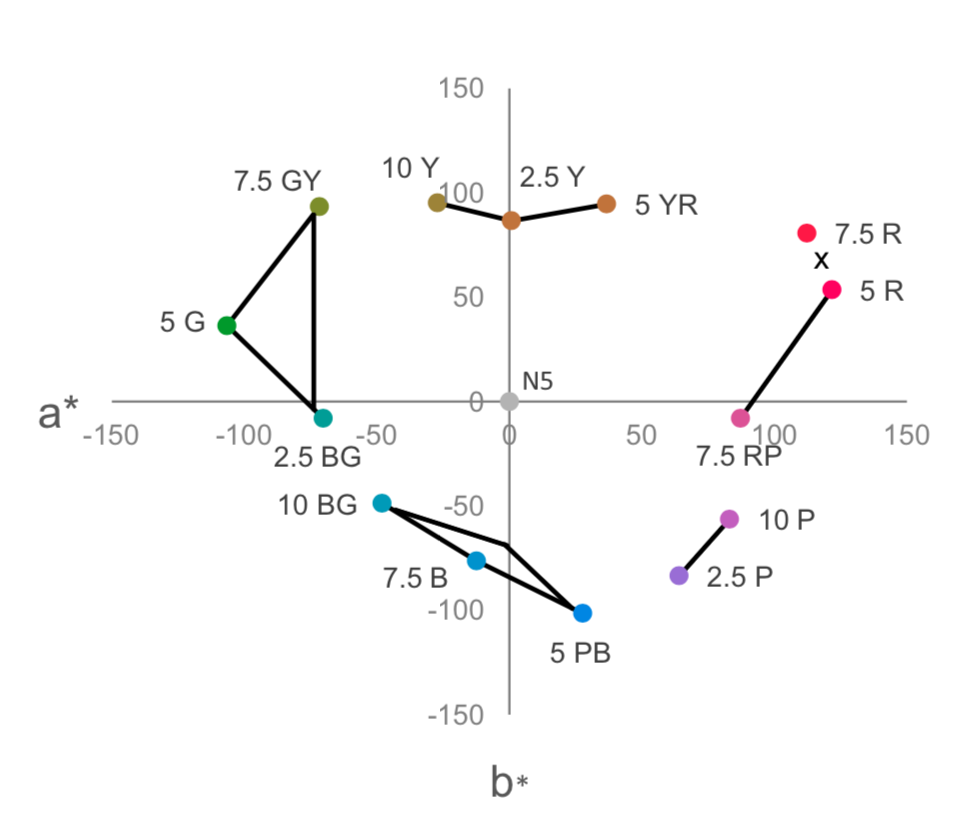
Skelton et al, 2017 figure S4

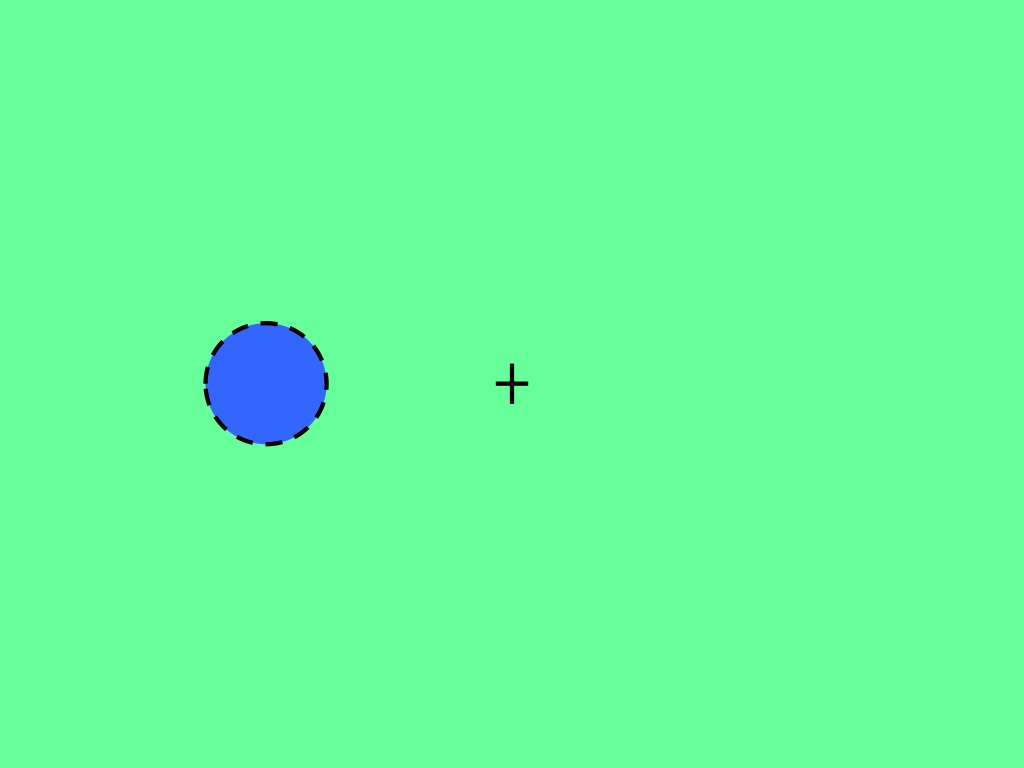
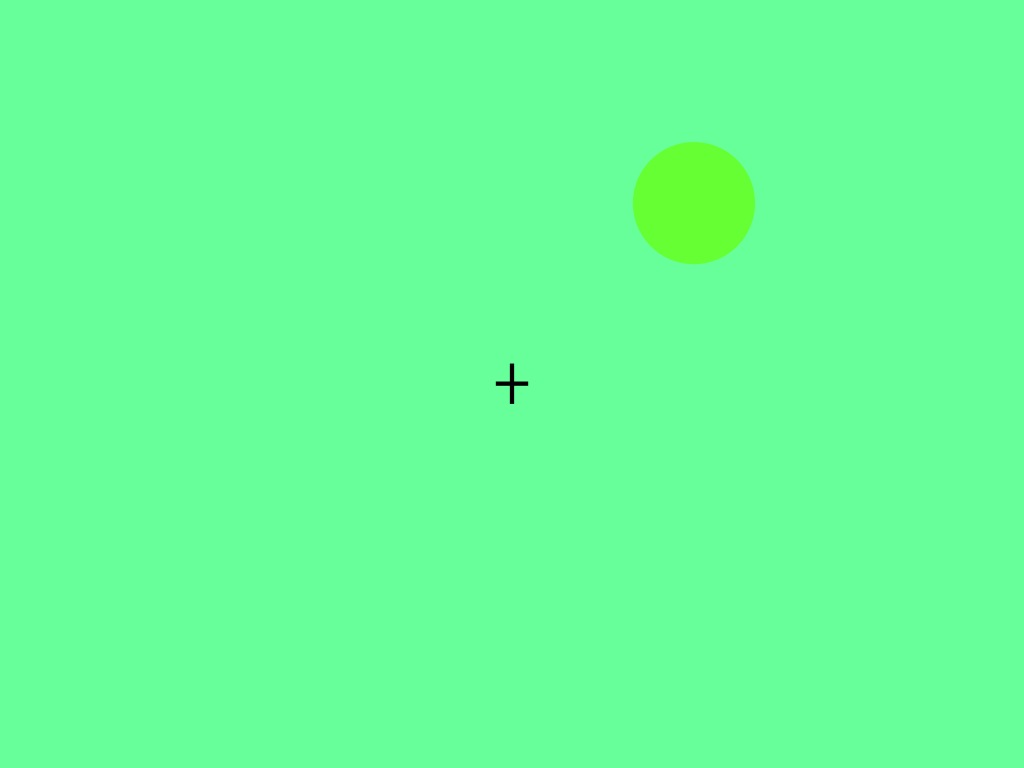
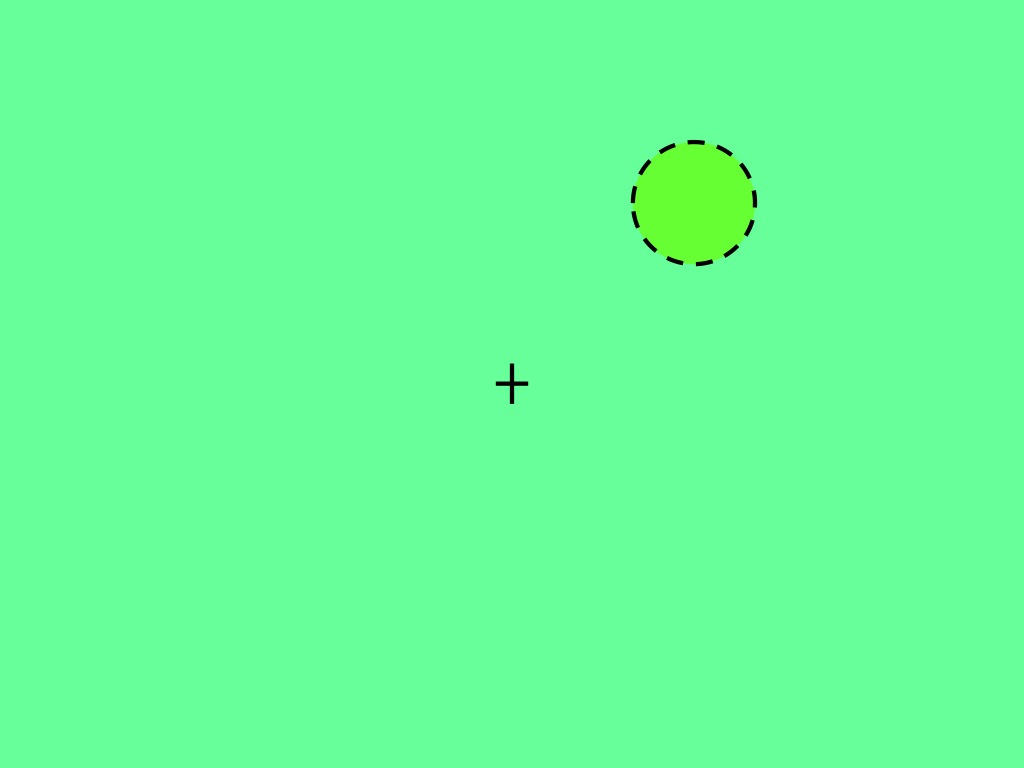
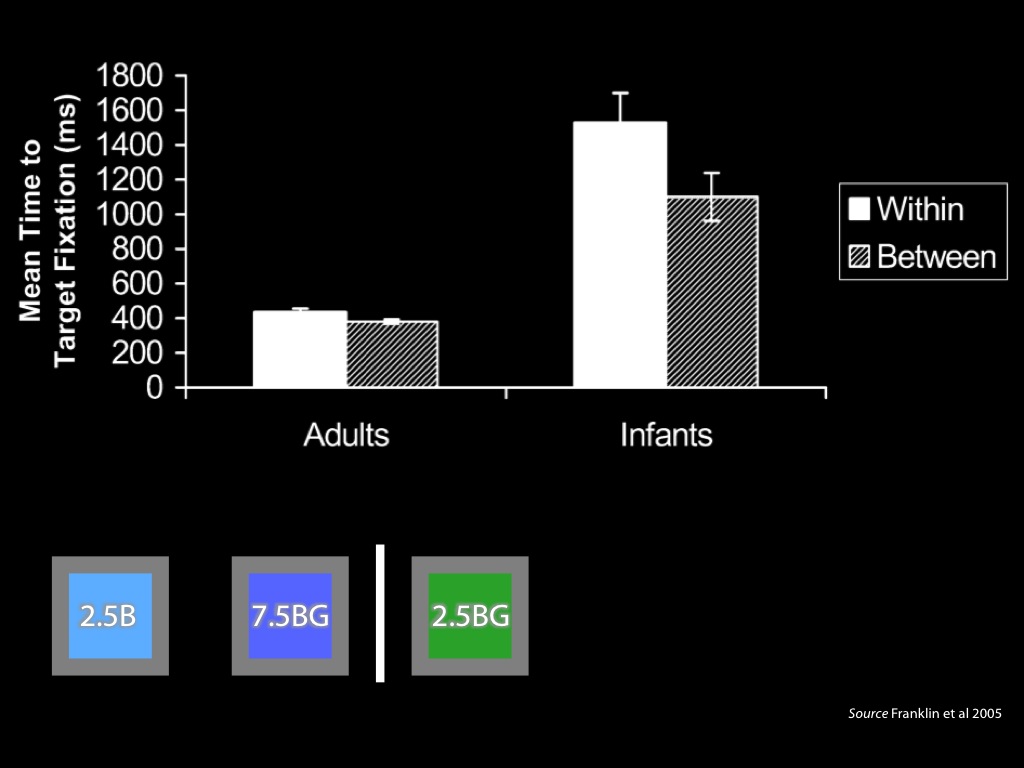

‘The color of the target was green, and this was kept constant across all trials. The background color was either green (from the same color category, i.e., within-category) or blue (from a different color category, i.e., between-category) to the target’
Franklin et al, 2005 p. 234
Before children reliably use colour words correctly, categorical perception explains:
- habituation -- 4 months
(Bornstein, Kessen and Weiskopf 1976)
- pop out [??] -- 4 months
(Franklin, Pilling and Davies 2005)
- re-identifying objects -- 9 months
(Wilcox, Woods and Chapa 2008)
Slightly older infants can also make use of colour properties such as red and green to recognise objects. For instance, nine-months-olds can determine whether an object they saw earlier is the same as a subsequently presented object on the basis of its colour (Wilcox, Woods and Chapa 2008). - learning proper names -- around 2 yearsBy the time they are two years old, toddlers who do not comprehend any colour terms can use colour categories implicitly in learning and using proper names; for instance, they are able to learn and use proper names for toy dinosaurs that differ only in colour (Soja 1994: Experiment 3).
(Soja 1994: Experiment 3)
So we see categorical perception of colour early in development and it is useful to children.


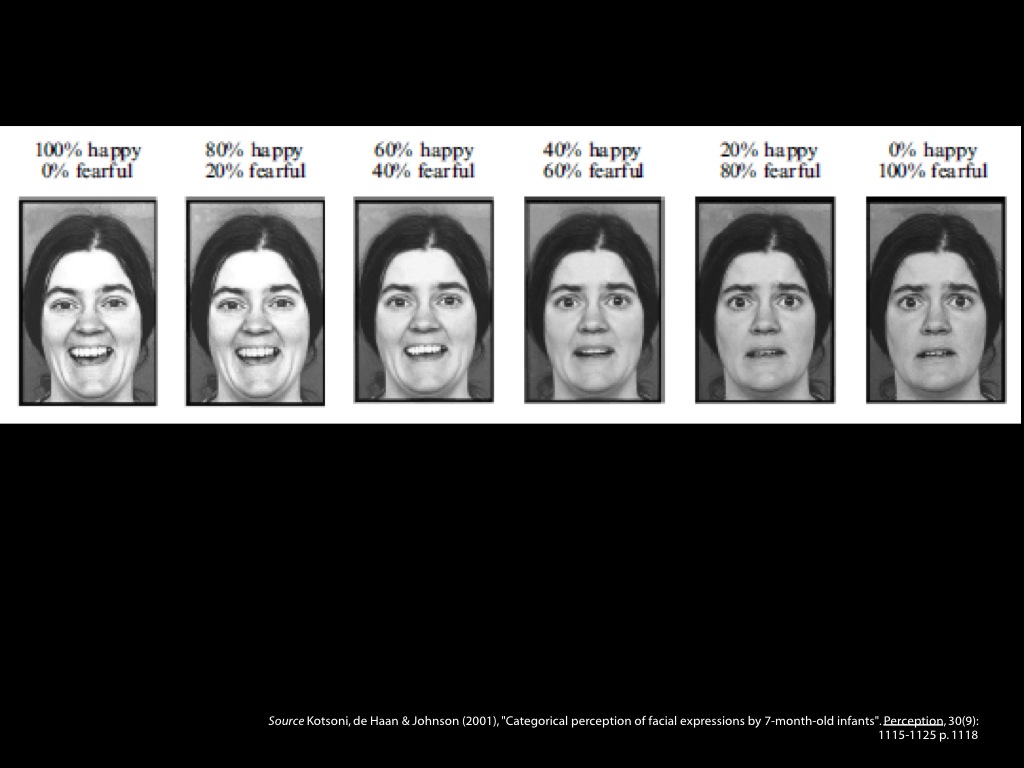
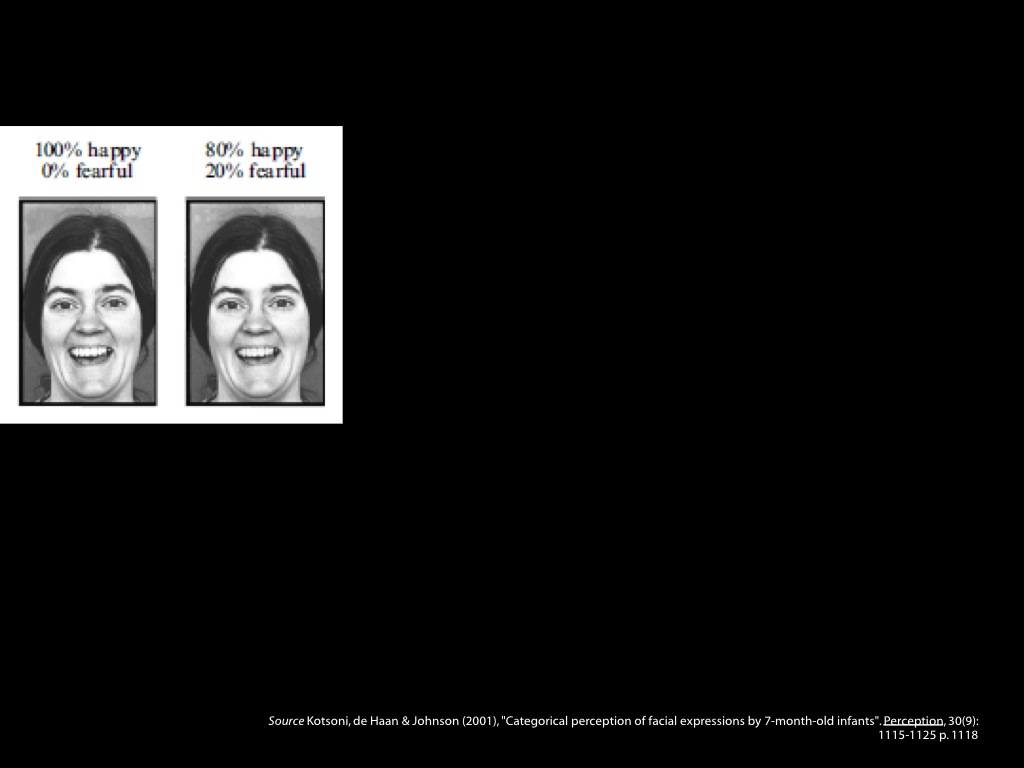

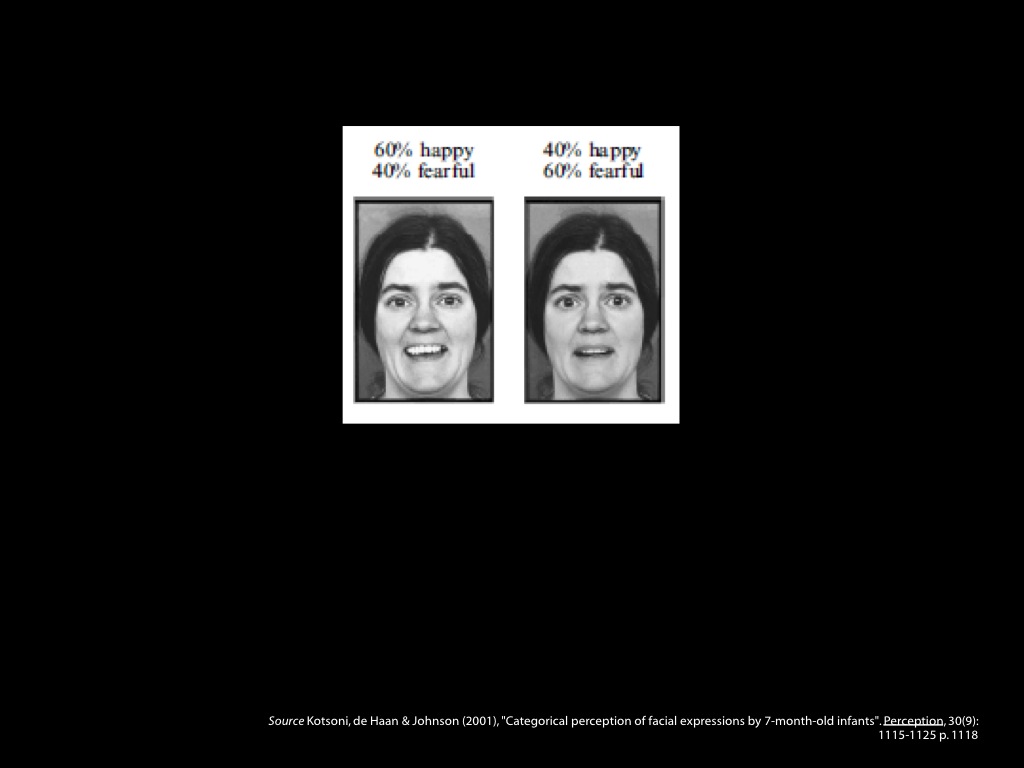
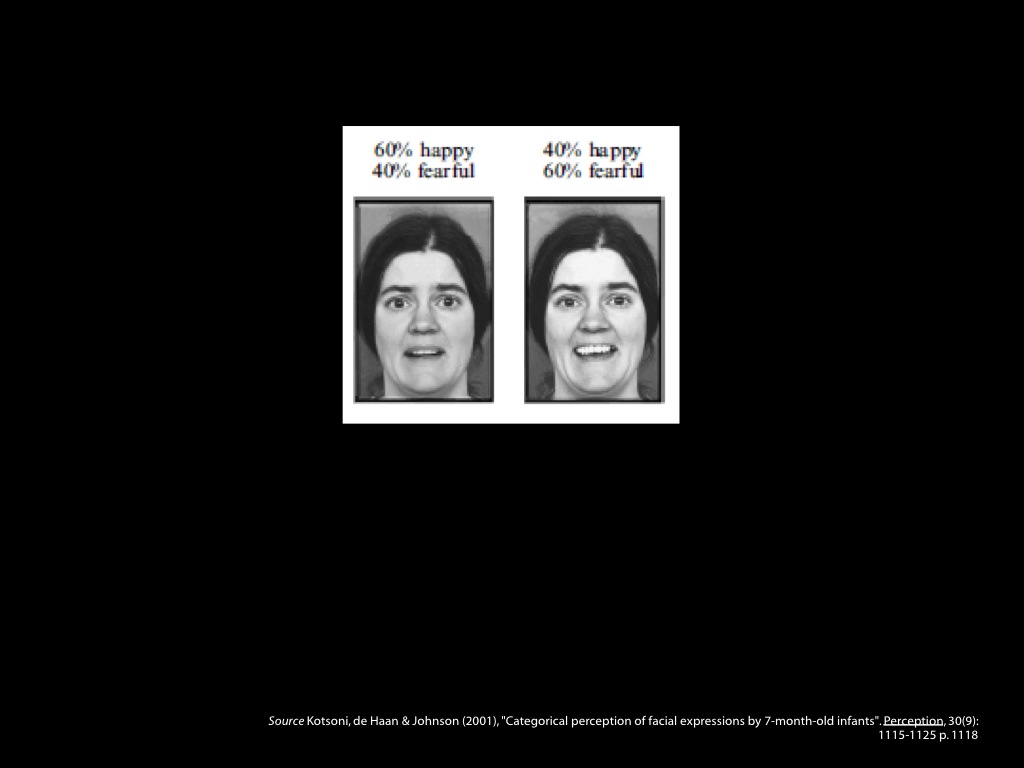


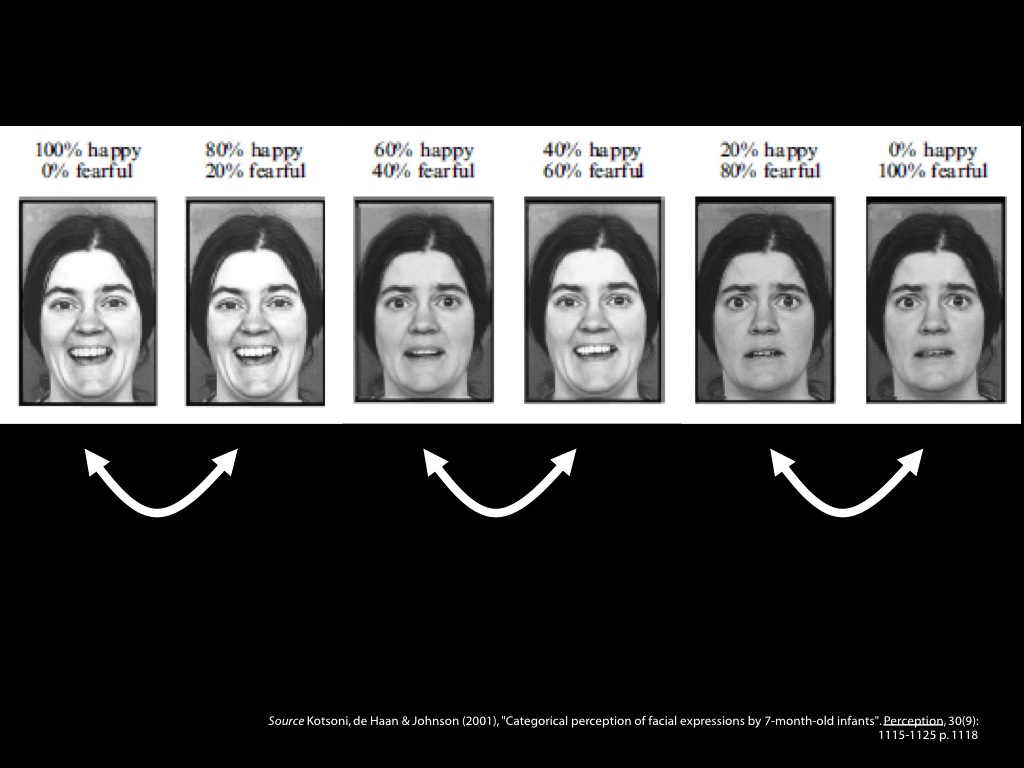
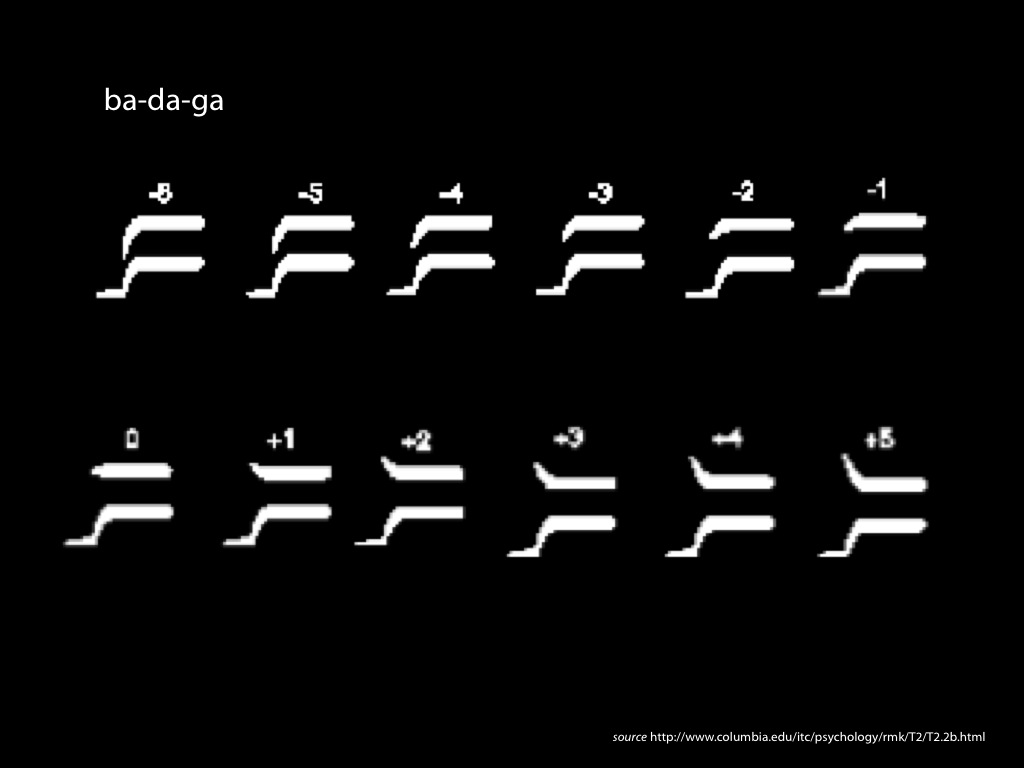

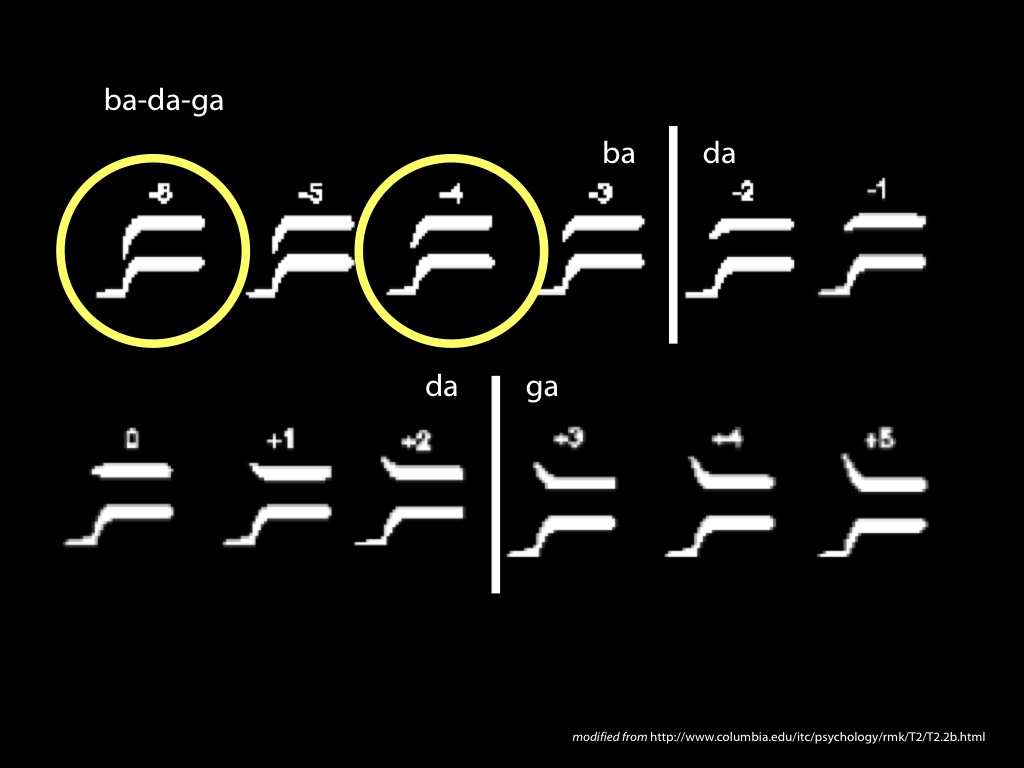
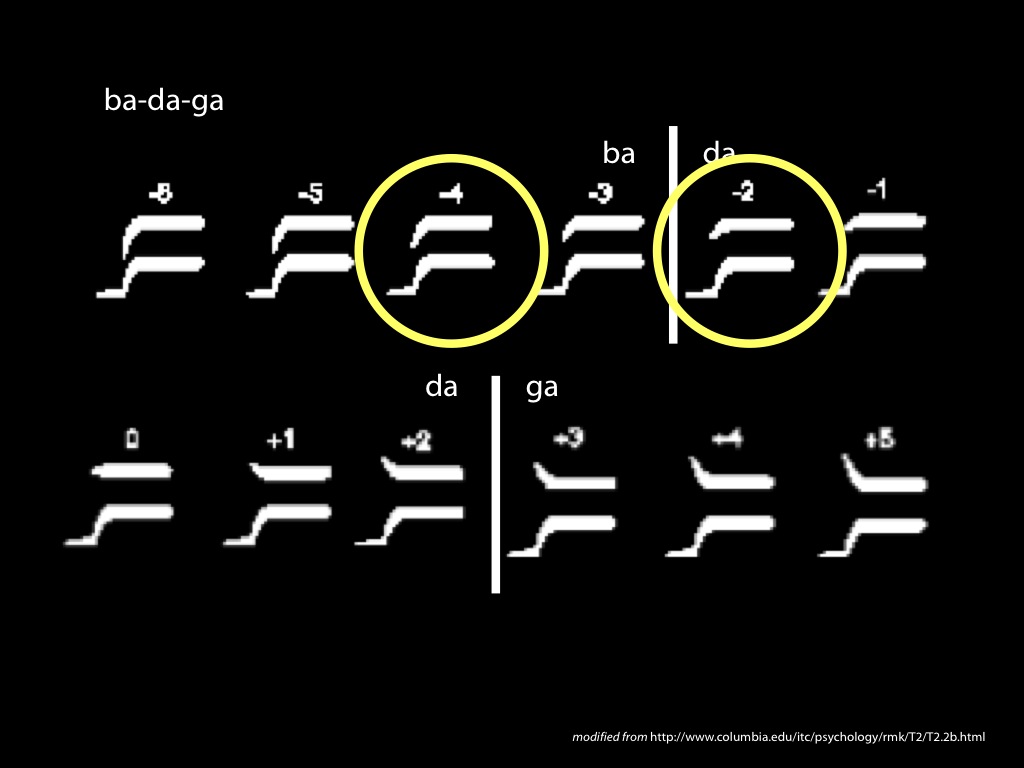
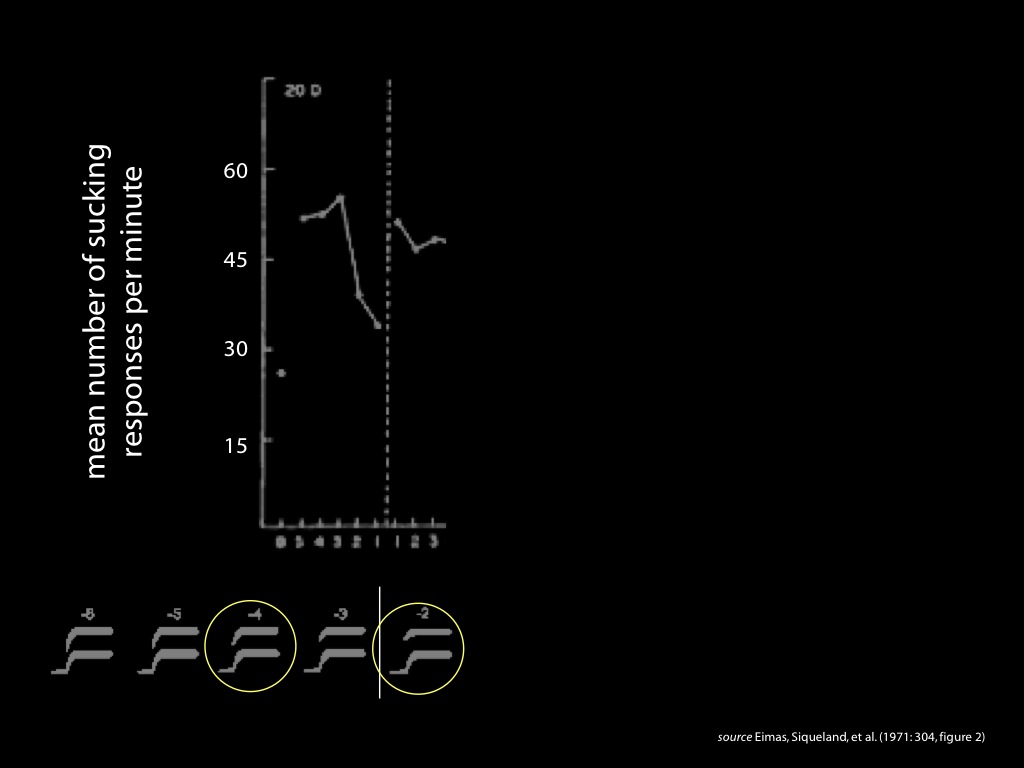
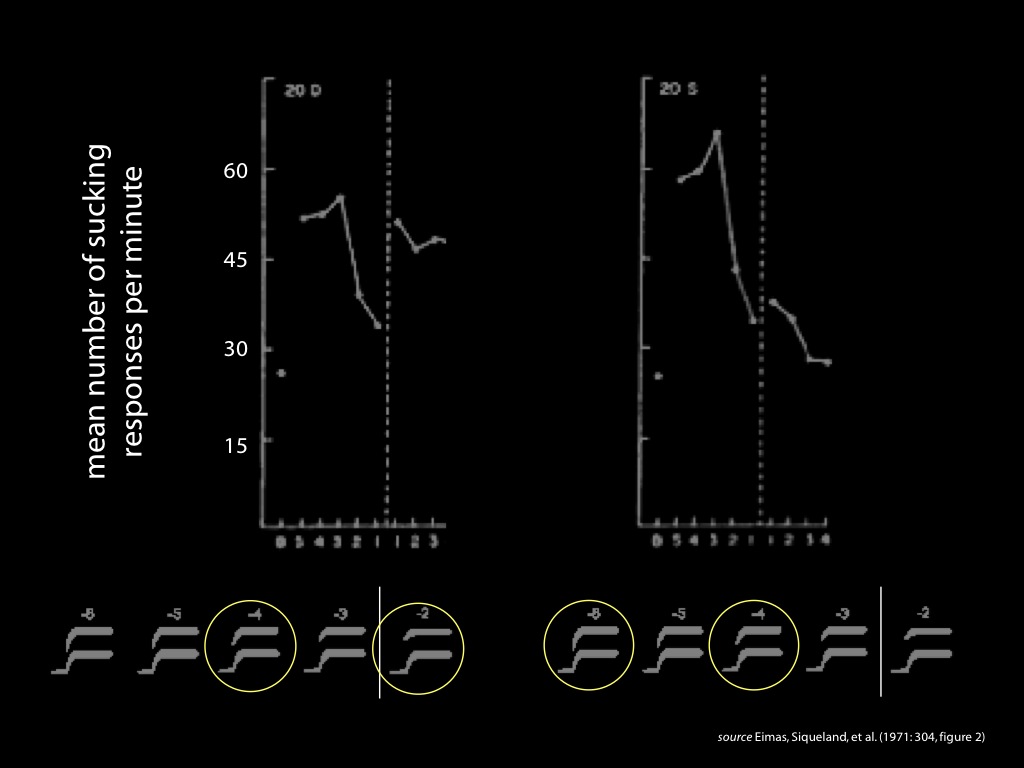
Infants (and adults) enjoy categorical perception of
- colour (from four months of age or earlier)
- orientation (five months)
- facial expressions of emotion (seven months)
- speech (one month)
- ...